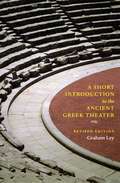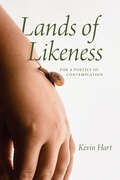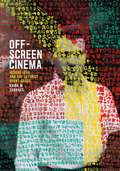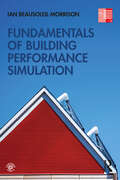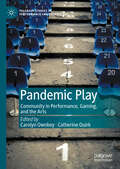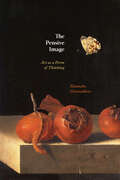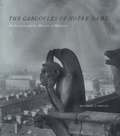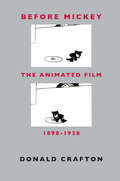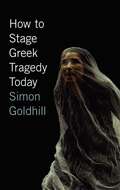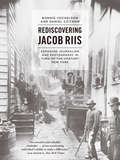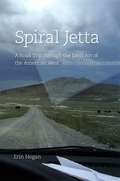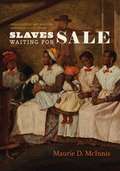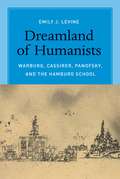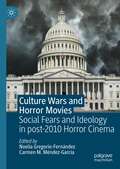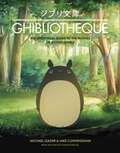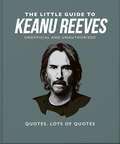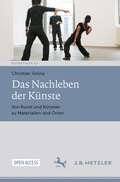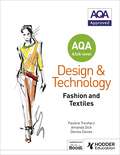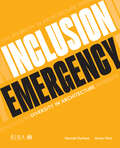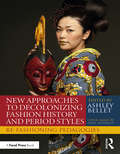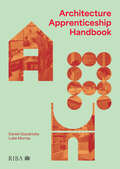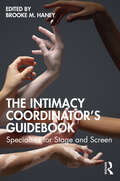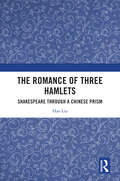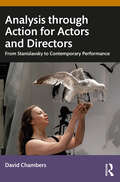- Table View
- List View
A Short Introduction to the Ancient Greek Theater
by Graham LeyContemporary productions on stage and film, and the development of theater studies, continue to draw new audiences to ancient Greek drama. With observations on all aspects of performance, this volume fills their need for a clear, concise account of what is known about the original conditions of such productions in the age of Pericles. Reexamining the surviving plays of Aeschylus, Sophocles, Euripides, and Aristophanes, Graham Ley here discusses acting technique, scenery, the power and range of the chorus, the use of theatrical space, and parody in their plays. In addition to photos of scenes from Greek vases that document theatrical performance, this new edition includes notes on ancient mime and puppetry and how to read Greek playtexts as scripts, as well as an updated bibliography. An ideal companion to The Complete Greek Tragedies, also published by the University of Chicago Press, Ley’s work is a concise and informative introduction to one of the great periods of world drama. "Anyone faced with Athenian tragedy or comedy for the first time, in or out of the classroom, would do well to start with A Short Introduction to Ancient Greek Theater."—Didaskalia
Lands of Likeness: For a Poetics of Contemplation
by Kevin HartAn original and profound exploration of contemplation from philosopher, theologian, and poet Kevin Hart. In Lands of Likeness, Kevin Hart develops a new hermeneutics of contemplation through a meditation on Christian thought and secular philosophy. Drawing on Kant, Schopenhauer, Coleridge, and Husserl, Hart first charts the emergence of contemplation in and beyond the Romantic era. Next, Hart shows this hermeneutic at work in poetry by Gerard Manley Hopkins, Marianne Moore, Wallace Stevens, and others. Delivered in its original form as the prestigious Gifford Lectures, Lands of Likeness is a revelatory meditation on contemplation for the modern world.
Off-Screen Cinema: Isidore Isou and the Lettrist Avant-Garde
by Kaira M. CabañasOne of the most important avant-garde movements of postwar Paris was Lettrism, which crucially built an interest in the relationship between writing and image into projects in poetry, painting, and especially cinema. Highly influential, the Lettrists served as a bridge of sorts between the earlier works of the Dadaists and Surrealists and the later Conceptual artists.Off-Screen Cinema is the first monograph in English of the Lettrists. Offering a full portrait of the avant-garde scene of 1950s Paris, it focuses on the film works of key Lettrist figures like Gil J Wolman, Maurice Lemaître, François Dufrêne, and especially the movement's founder, Isidore Isou, a Romanian immigrant whose “discrepant editing” deliberately uncoupled image and sound. Through Cabañas's history, we see not only the full scope of the Lettrist project, but also its clear influence on Situationism, the French New Wave, the New Realists, as well as American filmmakers such as Stan Brakhage.
Fundamentals of Building Performance Simulation
by Ian Beausoleil-MorrisonFundamentals of Building Performance Simulation pares the theory and practice of a multi-disciplinary field to the essentials for classroom learning and real-world applications. Authored by a veteran educator and researcher, this textbook equips graduate students and emerging and established professionals in engineering and architecture to predict and optimize buildings’ energy use. It employs an innovative pedagogical approach, introducing new concepts and skills through previously mastered ones and deepening understanding of familiar themes by means of new material. Covering topics from indoor airflow to the effects of the weather, the book’s 19 chapters empower learners to: Understand the models and assumptions underlying popular BPS tools Compare models, simulations, and modelling tools and make appropriate selections Recognize the effects of modelling choices and input data on simulation predictions And more. Each subject is introduced without reference to particular modelling tools, while practice problems at the end of each chapter provide hands-on experience with the tools of the reader’s choice. Curated reading lists orient beginners in a vast, cross-disciplinary literature, and the critical thinking skills stressed throughout prepare them to make contributions of their own. Fundamentals of Building Performance Simulation provides a much-needed resource for new and aspiring members of the building science community.
Pandemic Play: Community in Performance, Gaming, and the Arts (Palgrave Studies in Performance and Technology)
by Carolyn Ownbey Catherine QuirkWhen the arts, culture, and entertainment industries came to a halt in late winter 2020, many claimed this was the end of art as we knew it. Theatre managers, museum directors, performers, artists, and everyday folks had to figure out new strategies for living and thriving in a new world order. As the global pandemic and its consequences continue to play out, the question of how we have learned—as creators or consumers—to play, is far from settled. This collection addresses pandemic play in broad terms: how did creative industries adapt to a majority virtual world? How have our understandings of community and play evolved? Might new forms of art and play outlive the pandemic and supplant earlier iterations? Pandemic Play takes these questions as a starting point, exploring strategies, case studies, and effects of the arts worlds gone virtual.
The Pensive Image: Art as a Form of Thinking
by Hanneke GrootenboerGrootenboer considers painting as a form of thinking in itself, rather than a subject of philosophical and interpretive thought. While the philosophical dimension of painting has long been discussed, a clear case for painting as a form of visual thinking has yet to be made. Traditionally, vanitas still life paintings are considered to raise ontological issues while landscapes direct the mind toward introspection. Grootenboer moves beyond these considerations to focus on what remains unspoken in painting, the implicit and inexpressible that manifests in a quality she calls pensiveness. Different from self-aware or actively desiring images, pensive images are speculative, pointing beyond interpretation. An alternative pictorial category, pensive images stir us away from interpretation and toward a state of suspension where thinking through and with the image can start. In fluid prose, Grootenboer explores various modalities of visual thinking— as the location where thought should be found, as a refuge enabling reflection, and as an encounter that provokes thought. Through these considerations, she demonstrates that artworks serve as models for thought as much as they act as instruments through which thinking can take place. Starting from the premise that painting is itself a type of thinking, The Pensive Image argues that art is capable of forming thoughts and shaping concepts in visual terms.
The Gargoyles of Notre-Dame: Medievalism and the Monsters of Modernity
by Michael CamilleMost of the seven million people who visit the cathedral of Notre Dame in Paris each year probably do not realize that the legendary gargoyles adorning this medieval masterpiece were not constructed until the nineteenth century. The first comprehensive history of these world-famous monsters, The Gargoyles of Notre-Dame argues that they transformed the iconic thirteenth-century cathedral into a modern monument. Michael Camille begins his long-awaited study by recounting architect Eugène Viollet-le-Duc’s ambitious restoration of the structure from 1843 to 1864, when the gargoyles were designed, sculpted by the little-known Victor Pyanet, and installed. These gargoyles, Camille contends, were not mere avatars of the Middle Ages, but rather fresh creations—symbolizing an imagined past—whose modernity lay precisely in their nostalgia. He goes on to map the critical reception and many-layered afterlives of these chimeras, notably in the works of such artists and writers as Charles Méryon, Victor Hugo, and photographer Henri Le Secq. Tracing their eventual evolution into icons of high kitsch, Camille ultimately locates the gargoyles’ place in the twentieth-century imagination, exploring interpretations by everyone from Winslow Homer to the Walt Disney Company. Lavishly illustrated with more than three hundred images of its monumental yet whimsical subjects, The Gargoyles of Notre-Dame is a must-read for historians of art and architecture and anyone whose imagination has been sparked by the lovable monsters gazing out over Paris from one of the world’s most renowned vantage points.
Before Mickey: The Animated Film 1898–1928
by Donald CraftonThis witty and fascinating study reminds us that there was animation before Disney: about thirty years of creativity and experimentation flourishing in such extraordinary work as Girdie the Dinosaur and Felix the Cat. Before Mickey, the first and only in-depth history of animation from 1898-1928, includes accounts of mechanical ingenuity, marketing and art. Crafton is equally adept at explaining techniques of sketching and camera work, evoking characteristic styles of such pioneering animators as Winsor McCay and Ladislas Starevitch, placing work in its social and economic context, and unraveling the aesthetic impact of specific cartoons. "Before Mickey's scholarship is quite lively and its descriptions are evocative and often funny. The history of animation coexisted with that of live-action film but has never been given as much attention."—Tim Hunter, New York Times
How to Stage Greek Tragedy Today
by Simon GoldhillFrom the stages of Broadway and London to university campuses, Paris, and the bourgeoning theaters of Africa, Greek tragedy remains constantly in production. This global revival, in addition to delighting audiences, has highlighted both the promise and the pitfalls of staging ancient masterpieces in the modern age. Addressing the issues and challenges these performances pose, renowned classicist Simon Goldhill responds here to the growing demand for a comprehensive guide to staging Greek tragedy today. In crisp and spirited prose, Goldhill explains how Aeschylus, Euripides, and Sophocles conceived their works in performance and then summarizes everything we know about how their tragedies were actually staged. The heart of his book tackles the six major problems facing any company performing these works today: the staging space and concept of the play; the use of the chorus; the actor’s role in an unfamiliar style of performance; the place of politics in tragedy; the question of translation; and the treatment of gods, monsters, and other strange characters of the ancient world. Outlining exactly what makes each of these issues such a pressing difficulty for modern companies, Goldhill provides insightful solutions drawn from his nimble analyses of some of the best recent productions in the United States, Britain, and Continental Europe. One of the few experts on both Greek tragedy and contemporary performance, Goldhill uses his unique background and prodigious literary skill to illuminate brilliantly what makes tragedy at once so exciting and so tricky to get right. The result will inspire and enlighten all directors and performers—not to mention the growing audiences—of ancient Greek theater.
Rediscovering Jacob Riis: Exposure Journalism and Photography in Turn-of-the-Century New York
by Daniel Czitrom Bonnie YochelsonBefore publishing his pioneering book How the Other Half Lives—a photojournalistic investigation into the poverty of New York’s tenement houses, home to three quarters of the city’s population—Jacob Riis (1849-1914) spent his first years in the United States as an immigrant and itinerant laborer, barely surviving on his carpentry skills until he landed a job as a muckraking reporter. These early experiences provided Riis with an understanding of what it was like to be poor in the immigrant communities that populated New York’s slums, and it was this empathy that would shine through in his iconic photos. With Rediscovering Jacob Riis, art historian Bonnie Yochelson and historian Daniel Czitrom place Jacob Riis’s images in historical context even as they expose a clear sightline to the present. In the first half of their book, Czitrom explores Riis’s reporting and activism within the gritty specifics of Gilded Age New York: its new immigrants, its political machines, its fiercely competitive journalism, its evangelical reformers, and its labor movement. In delving into Riis’s intellectual education and the lasting impact of How the Other Half Lives, Czitrom shows that though Riis argued for charity, not sociopolitical justice, the empathy that drove his work continues to inspire urban reformers today. In the second half of the book, Yochelson describes for the first time Riis’s photographic practice: his initial reliance on amateur photographers to take the photographs he needed, his own use of the camera, and then his collecting of photographs by professionals, who by 1900 were documenting social reform efforts for government agencies and charities. She argues that while Riis is rightly considered a revolutionary in the history of photography, he was not a photographic artist. Instead, Riis was a writer and lecturer who first harnessed the power of photography to affect social change. As staggering inequality continues to be an urgent political topic, this book, illustrated with nearly seventy of Riis’s photographs, will serve as a stunning reminder of what has changed, and what has not.
Spiral Jetta: A Road Trip through the Land Art of the American West (Culture Trails Ser.)
by Erin HoganErin Hogan hit the road in her Volkswagen Jetta and headed west from Chicago in search of the monuments of American land art: a salty coil of rocks, four hundred stainless steel poles, a gash in a mesa, four concrete tubes, and military sheds filled with cubes. Her journey took her through the states of Utah, Nevada, New Mexico, Arizona, and Texas. It also took her through the states of anxiety, drunkenness, disorientation, and heat exhaustion. Spiral Jetta is a chronicle of this journey.A lapsed art historian and devoted urbanite, Hogan initially sought firsthand experience of the monumental earthworks of the 1970s and the 1980s—Robert Smithson’s Spiral Jetty, Nancy Holt’s Sun Tunnels, Walter De Maria’s Lightning Field, James Turrell’s Roden Crater, Michael Heizer’s Double Negative, and the contemporary art mecca of Marfa, Texas. Armed with spotty directions, no compass, and less-than-desert-appropriate clothing, she found most of what she was looking for and then some.“I was never quite sure what Hogan was looking for when she set out . . . or indeed whether she found it. But I loved the ride. In Spiral Jetta, an unashamedly honest, slyly uproarious, ever-probing book, art doesn’t magically have the power to change lives, but it can, perhaps no less powerfully, change ways of seeing.”—Tom Vanderbilt, New YorkTimes Book Review“The reader emerges enlightened and even delighted. . . . Casually scrutinizing the artistic works . . . while gamely playing up her fish-out-of-water status, Hogan delivers an ingeniously engaging travelogue-cum-art history.”—Atlantic“Smart and unexpectedly hilarious.”—Kevin Nance, ChicagoSun-Times“One of the funniest and most entertaining road trips to be published in quite some time.”—June Sawyers, ChicagoTribune“Hogan ruminates on how the work affects our sense of time, space, size, and scale. She is at her best when she reexamines the precepts of modernism in the changing light of New Mexico, and shows how the human body is meant to be a participant in these grand constructions.”—New Yorker
Slaves Waiting for Sale: Abolitionist Art and the American Slave Trade
by Maurie D. McInnisIn 1853, Eyre Crowe, a young British artist, visited a slave auction in Richmond, Virginia. Harrowed by what he witnessed, he captured the scene in sketches that he would later develop into a series of illustrations and paintings, including the culminating painting, Slaves Waiting for Sale, Richmond, Virginia.This innovative book uses Crowe’s paintings to explore the texture of the slave trade in Richmond, Charleston, and New Orleans, the evolving iconography of abolitionist art, and the role of visual culture in the transatlantic world of abolitionism. Tracing Crowe’s trajectory from Richmond across the American South and back to London—where his paintings were exhibited just a few weeks after the start of the Civil War—Maurie D. McInnis illuminates not only how his abolitionist art was inspired and made, but also how it influenced the international public’s grasp of slavery in America. With almost 140 illustrations, Slaves Waiting for Sale brings a fresh perspective to the American slave trade and abolitionism as we enter the sesquicentennial of the Civil War.
Dreamland of Humanists: Warburg, Cassirer, Panofsky, and the Hamburg School
by Emily J. LevineDeemed by Heinrich Heine a city of merchants where poets go to die, Hamburg was an improbable setting for a major intellectual movement. Yet it was there, at the end of World War I, at a new university in this commercial center, that a trio of twentieth-century pioneers in the humanities emerged. Working side by side, Aby Warburg, Ernst Cassirer, and Erwin Panofsky developed new avenues in art history, cultural history, and philosophy, changing the course of cultural and intellectual history in Weimar Germany and throughout the world. In Dreamland of Humanists, Emily J. Levine considers not just these men, but the historical significance of the time and place where their ideas took form. Shedding light on the origins of their work on the Renaissance and the Enlightenment, Levine clarifies the social, political, and economic pressures faced by German-Jewish scholars on the periphery of Germany’s intellectual world. By examining the role that context plays in our analysis of ideas, Levine confirms that great ideas—like great intellectuals—must come from somewhere.
Culture Wars and Horror Movies: Social Fears and Ideology in post-2010 Horror Cinema
by Noelia Gregorio-Fernández Carmen M. Méndez-GarcíaIn this volume, contributors explore the deep ideological polarization in US society as portrayed in horror narratives and tropes. By navigating this polarized society in their representation of social values, twenty[1]first-century horror films critically frame and engage conflicting and divisive ideological issues. Culture Wars and Horror Movies: Social Fears and Ideology in Post-2010 Horror Cinema analyses the ways in which these “culture wars” make their way into and through contemporary horror films, focusing on the post-2010 US context and its fundamental political divisions.
Ghibliotheque: The Unofficial Guide to the Movies of Studio Ghibli
by Jake Cunningham Michael LeaderRevised and updated - includes Miyazaki's new masterpiece, The Boy and the Heron.Explore the films of magical Japanese animation masters Studio Ghibli in this film-by-film celebration for newcomers and long-time fans alike.Ghibliotheque reviews each Studio Ghibli movie in turn, in the voice of expert and newcomer. The lively text delves into production details, themes, key scenes and general reviews, as well as Ghibli-specific information. It's beautifully illustrated with stills and posters from each movie.Written by the hosts of the acclaimed Ghibliotheque podcast, this is the first and last word on the films of Studio Ghibli.
The Little Guide to Keanu Reeves: The Nicest Guy in Hollywood (The\little Book Of... Ser.)
by Orange Hippo!Why we're all crazy about Keanu.When even your name is beautiful (Keanu means "cool breeze over the mountains"), it's no surprise that Keanu Reeves was destined to become one of world's biggest and most enduring film stars. Bursting onto our screens in eighties in River's Edge and Bill and Ted's Excellent Adventure, his run of smash hits continued through the next decade with Point Break, Much Ado About Nothing, Speed, and his groundbreaking role as Neo in The Matrix. Then, in 2014, his sensational comeback in the John Wick films catapulted him right back to the top of the Hollywood A-list.No stranger to tragedy in his personal life - his baby was stillborn and his partner died in a car accident two years later - Keanu is as famous for his kindness, wisdom and philanthropy as he is for his film career. He has secretly donated large sums to children's hospitals, given generous gifts to crew members on set and made headlines for his kindness to fans. Join us in a celebration of the man widely known as "the Internet's boyfriend"."If you can make a woman laugh, you're seeing the most beautiful thing on God's earth." Keanu Reeves on womenBorn in Lebanon and raised in Australia, the USA and Canada, Reeves is of Chinese, English, Irish, Hawaiian and Portuguese descent. (But he's Canadian, OK?)
Ghibliotheque: The Unofficial Guide to the Movies of Studio Ghibli
by Jake Cunningham Michael LeaderRevised and updated - includes Miyazaki's new masterpiece, The Boy and the Heron.Explore the films of magical Japanese animation masters Studio Ghibli in this film-by-film celebration for newcomers and long-time fans alike.Ghibliotheque reviews each Studio Ghibli movie in turn, in the voice of expert and newcomer. The lively text delves into production details, themes, key scenes and general reviews, as well as Ghibli-specific information. It's beautifully illustrated with stills and posters from each movie.Written by the hosts of the acclaimed Ghibliotheque podcast, this is the first and last word on the films of Studio Ghibli.
Das Nachleben der Künste: Von Kunst und Künsten zu Materialien und Orten (Ästhetiken X.0 – Zeitgenössische Konturen ästhetischen Denkens)
by Christian GrünyDie künstlerische Produktion der Gegenwart ist äußerst divers und kaum mehr auf klare Kategorien festlegbar. Es ist eine geläufige Diagnose, dass sich Disziplinengrenzen auflösen und dass letztlich alles in einer Kunst im Singular aufgeht. Das Buch vertritt die These, dass bei allen Überschreitungs- und Hybridisierungsbewegungen disziplinäre Logiken weiterhin bedeutsam sind und dass die Begriffe der Kunst im Singular und der Künste im Plural nur schlecht geeignet sind, diese Situation zu beschreiben: Sie unterschätzen die Heterogenität der künstlerischen Arbeiten bzw. suggerieren, die verschiedenen Disziplinen ließen sich sauber nebeneinander sortieren und folgten im Großen und Ganzen derselben Logik, was offensichtlich nicht der Fall ist. Als alternative Beschreibungsmöglichkeiten werden die Begriffe des Materials und des Ortes angeboten, mit denen jeweils konkrete, aber systematisch verankerte Analysen an die Stelle klarer Kategorisierungen gesetzt werden. Der Begriff des künstlerischen Materials wird von Theodor W. Adorno übernommen, aber flexibilisiert: Er ist produktiv darin, dass er die innere Historizität von Kunstwerken zu denken erlaubt und sie auf Vorläufer und Traditionslinien beziehbar macht. Er muss allerdings von der Vorstellung eines klaren Fortschritts befreit und von der Fixierung auf einzelne, getrennte Disziplinen gelöst werden. Mit dem Begriff des Ortes wird der disziplinären, architektonischen, institutionellen und geopolitischen Situierung künstlerischer Arbeiten Rechnung getragen. Die beiden Begriffe funktionieren komplementär, indem sie Materiallinien auch über Grenzen hinweg verfolgbar und die Interferenzen beschreibbar machen, die sich bei Ortswechseln ergeben.Dies ist ein Open-Access-Buch.
AQA AS/A-Level Design and Technology: Fashion and Textiles
by Amanda Dick Pauline Treuherz Denise DaviesExam board: AQALevel: A-levelSubject: Design and TechnologyFirst teaching: September 2017First exams: Summer 2018 (AS) Summer 2019 (A-Level)Encourage your students to be creative, innovative and critical designers with a textbook that builds in-depth knowledge and understanding of the materials, components and processes associated with the creation of fashion and textile products.Our experienced author team will help guide you through the requirements of the specification, covering the core technical and designing and making principles needed for the 2017 AQA AS and A-level Design and Technology Fashion and Textiles specification.- Explores real-world contexts for fashion and textiles- Develops practical skills and theoretical knowledge and builds student confidence- Supports students with the application of maths skills to fashion and textiles- Helps guide students through the requirements of the Non-Exam Assessments and the written exams at both AS and A-level
Inclusion Emergency: Diversity in architecture
by Hannah Durham Grace ChoiArchitecture is at a tipping point. Voices of the under-represented have been increasing in volume and are agitated for change. If we don’t collectively listen, re-adjust and change our future outlook, we limit the potential relevance of the profession in today’s society and, ultimately, the places we create. Capturing insight from leading voices in the profession, this book encourages understanding, reflection and addresses critical questions, providing steps towards meaningful change. It will help those who are under-represented to find role models, context and tools & to be confident, supported and valued. Building understanding for those more privileged to acknowledge bias, it will enable mitigation and awareness of the issues to encourage meaningful action. This is a call for change. Now.
New Approaches to Decolonizing Fashion History and Period Styles: Re-Fashioning Pedagogies
by Ashley BelletNew Approaches to Decolonizing Fashion History and Period Styles: Re-Fashioning Pedagogies offers a wide array of inclusive, global, practical approaches for teaching costume and fashion history.Costume designers, technicians, and historians have spent the last several years re-evaluating how they teach costume and fashion history, acknowledging the need to refocus the discourse to include a more global perspective. This book is a collection of pedagogical methods aimed to do just that, with an emphasis on easy reference, accessible activities, and rubrics, and containing a variety of ways to restructure the course. Each chapter offers a course description, syllabus calendar, course objectives, and learning outcomes, as well as sample activities from instructors across the country who have made major changes to their coursework. Using a combination of personal narratives, examples from their work, bibliographies of helpful texts, and student responses, contributors suggest a variety of ways to decolonize the traditionally Western-focused fashion history syllabus.This collection of pedagogical approaches is intended to support and inspire instructors teaching costume design, costume history, fashion history, period styles, and other aesthetic histories in the arts.
Architecture Apprenticeship Handbook
by Daniel Goodricke Luke MurrayArchitecture apprenticeships are a new route into the profession. Having gained traction since their inception in 2018, it is an attractive route for young generations of architects to obtain their professional qualifications and earn while they learn. Aimed at prospective and current Level 7: Architect Apprentices, this guide provides the knowledge to achieve the most from your apprenticeship education, empowering your exposure in the profession within academic and professional areas. Taking you on a journey through the apprenticeship, it presents key stages of the course through precedents and will let you know what to expect from this educational route, and when to expect it. Using case studies from recent graduates and current apprentices who have excelled through this route, it features information from employers and academics involved in architecture apprenticeship courses in the UK to provide tips, advice and guidance. Designed to be interactive, you will be able to populate and annotate the book at various stages to map the key stages of your journey and reflect on your professional development.
The Intimacy Coordinator's Guidebook: Specialties for Stage and Screen
by Brooke M. HaneyThe Intimacy Coordinator's Guidebook: Specialties for Stage and Screen explores the role of the intimacy choreographer with an in-depth look at specializations that exist within the profession.With contributions by over 30 industry professionals, this book aims to bring awareness to a wide range of needs a project may have and how intimacy professionals use their cultural competency specialists in practice to create the most compelling storytelling. In Part One, the book addresses the scope of practice of an intimacy professional by discussing competency, finding your lens and tangential fields in the industry like fight directors, mental health coordinators and cultural competency specialists. Part Two covers specialties like working with minors, prosthetics, intimacy and disability, staging queer intimacy, working with fat actors, Black American intimacy, dance, working on scenes of trauma, sexual violence and non-consent, and BDSM. Between each chapter is a conversation with an actor, director or producer on their experiences working with an intimacy coordinator. In Part Three, the book looks at what it means to be qualified and intimacy professionals' hopes for the future of the industry.The Intimacy Coordinator's Guidebook is an invaluable resource for directors and producers looking to hire an intimacy professional, as well as in-depth study for those who are training or practicing in the field of intimacy for performance.
The Romance of Three Hamlets: Shakespeare through a Chinese Prism
by Hao LiuThrough a metaphorical journey of Shakespeare in traditional Chinese theatre, using three Chinese opera productions of Hamlet as signposts, the book discusses the relationship between Shakespeare and Chinese theatrical traditions.A brief discussion of the Yue-opera Hamlet looks back at the role of Shakespeare in the Chinese discourse of renaissance and re-evaluation of traditions since the early twentieth century. A detailed analysis of the Peking-opera Hamlet shows what is lost and what is gained in the negotiation between Shakespeare and Chinese theatrical traditions, and why. The third Hamlet is an experimental Kun-opera production, leading to a discussion of the potential for Shakespeare and Chinese theatrical traditions to join hands and reach new depths of artistic expression.The book will attract researchers, students, and enthusiasts of Shakespeare, cross-cultural Shakespearean recreation, Chinese theatrical traditions, and comparative literature.
Analysis through Action for Actors and Directors: From Stanislavsky to Contemporary Performance
by David ChambersAnalysis through Action for Actors and Directors is a comprehensive view of an innovative and exciting process for making new theatre.As well as an understanding of how Analysis through Action has developed over time, this book also demonstrates how it can be put into practice in today’s theatre. The first part of this book traces the exciting genealogy from Stanislavsky’s unfinished experiments, through the insights of geniuses Maria Knebel and Georgii Tovstonogov, down to today’s avant-garde auteurs. The second part is a practical manual based on extensive field testing by the author and colleagues. Here, two key components of the process are elucidated: Text Actions – ten interwoven text analysis steps – to be twinned with the thrilling rehearsal process using focused and joyful improvisations called Études.Written for new or experienced theatre students and practitioners, this book will enrich the technique of any theatre artist and anyone else interested in the theatre and its future.
